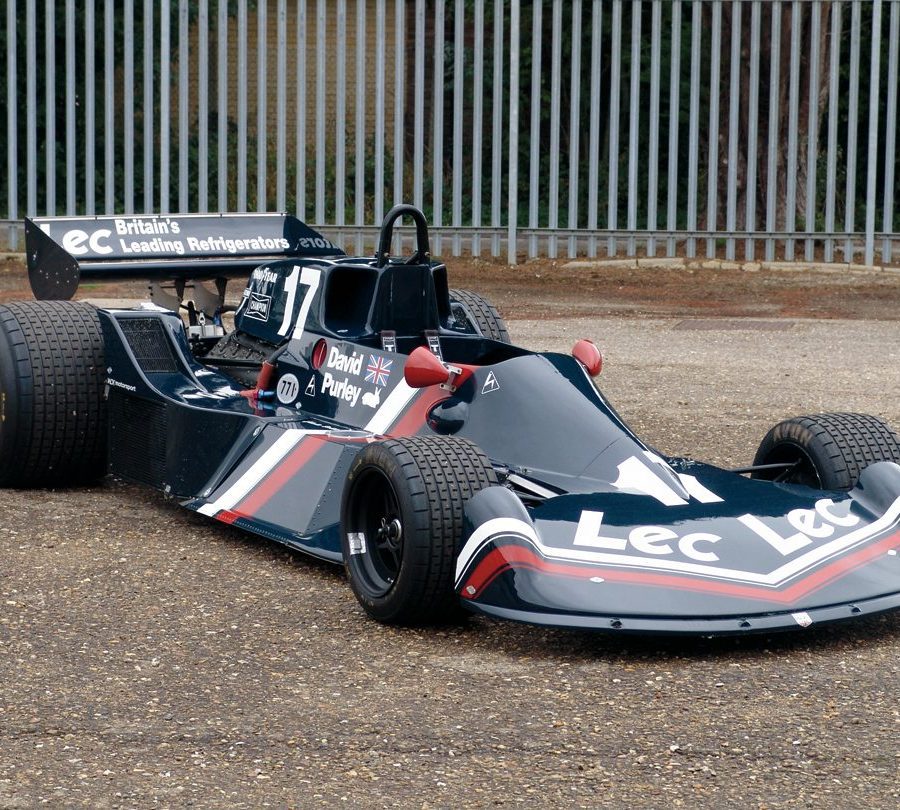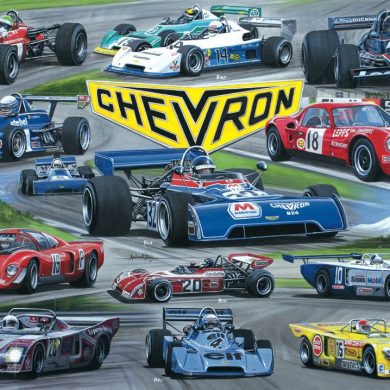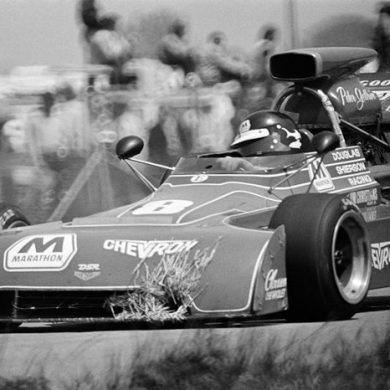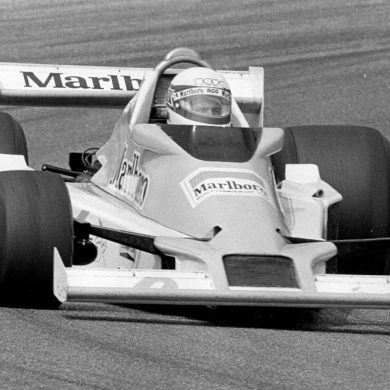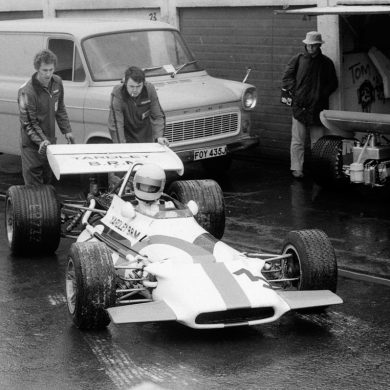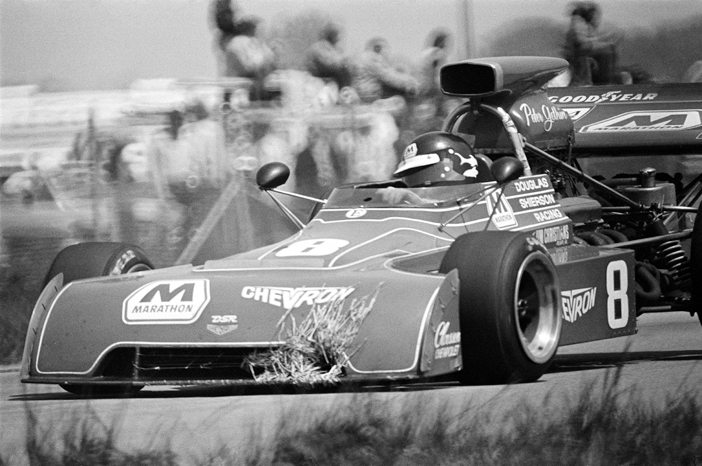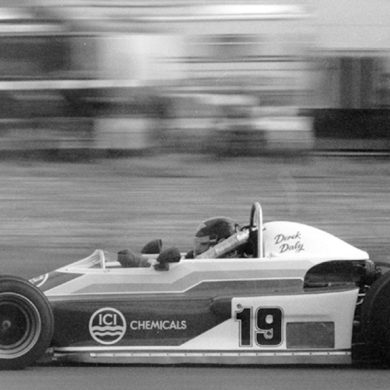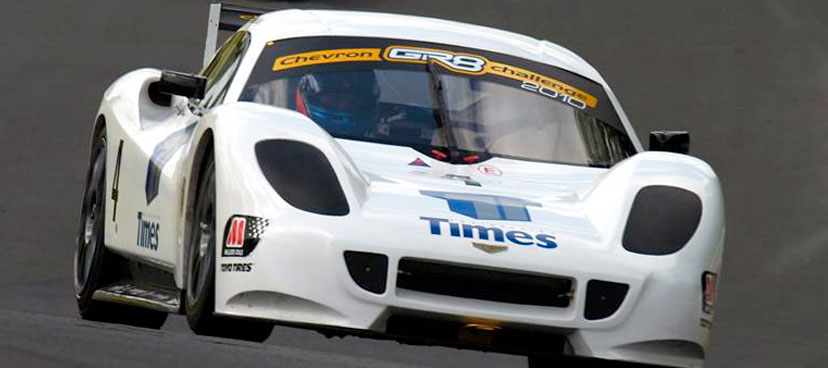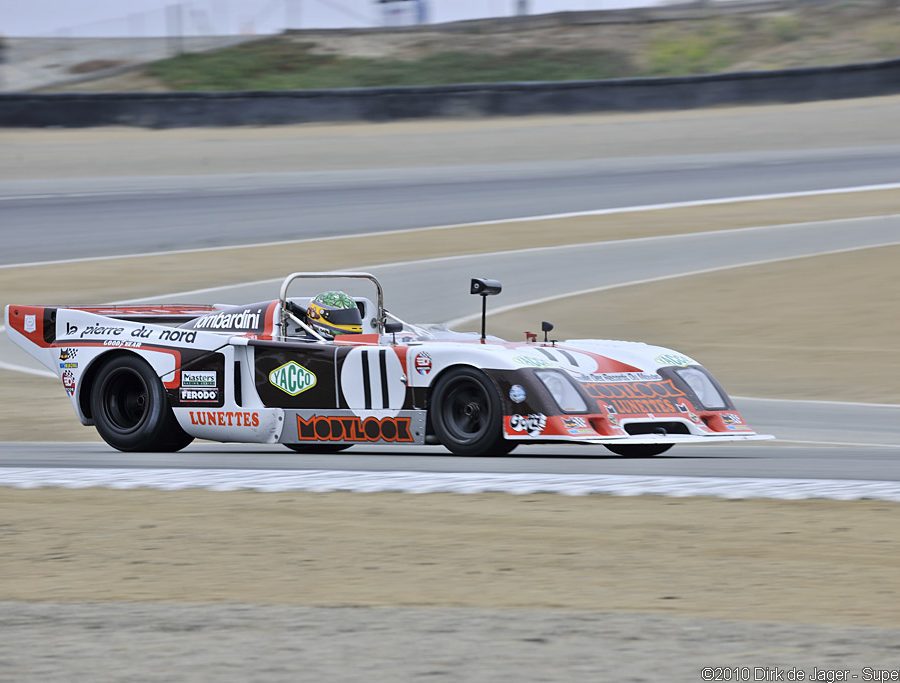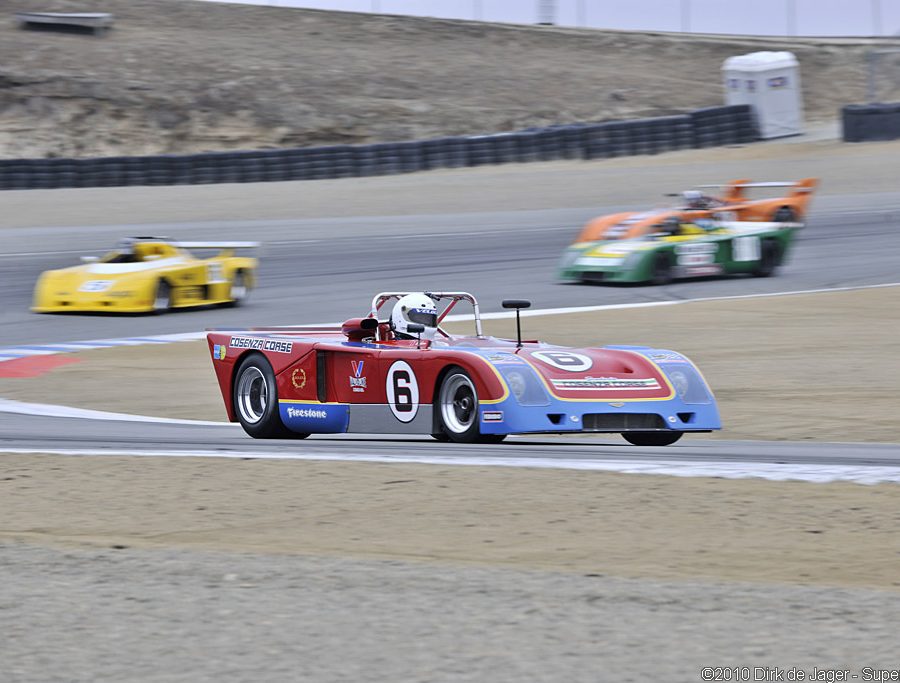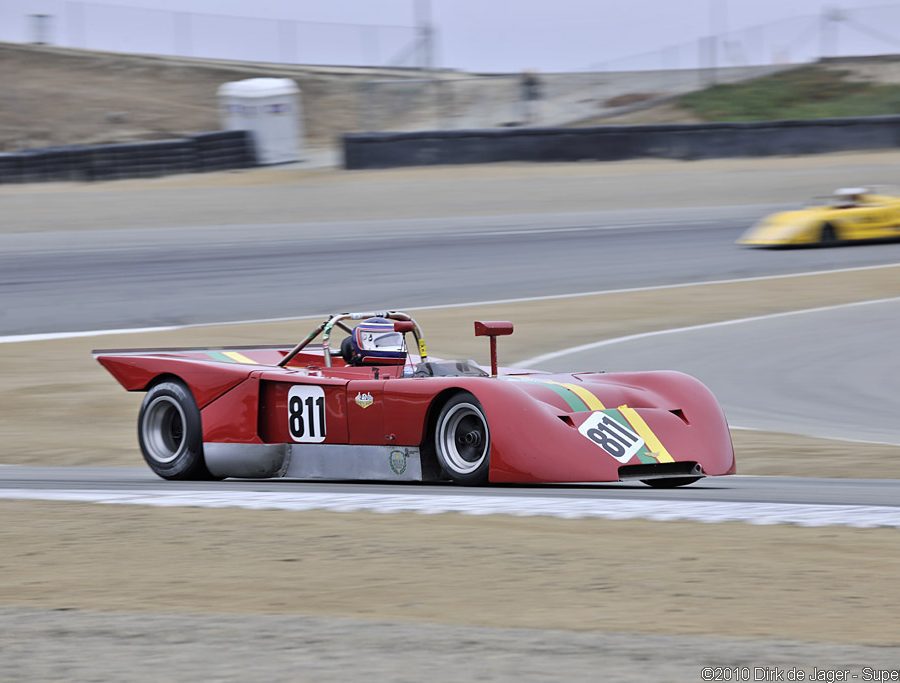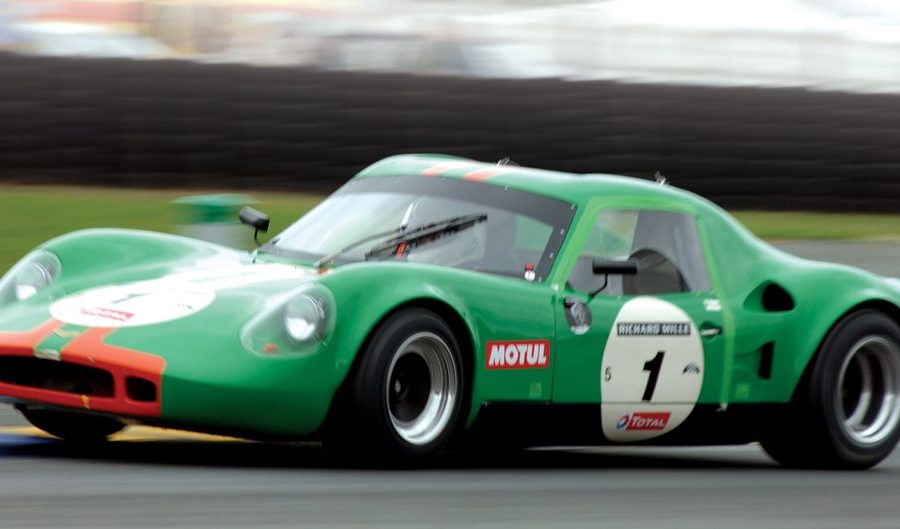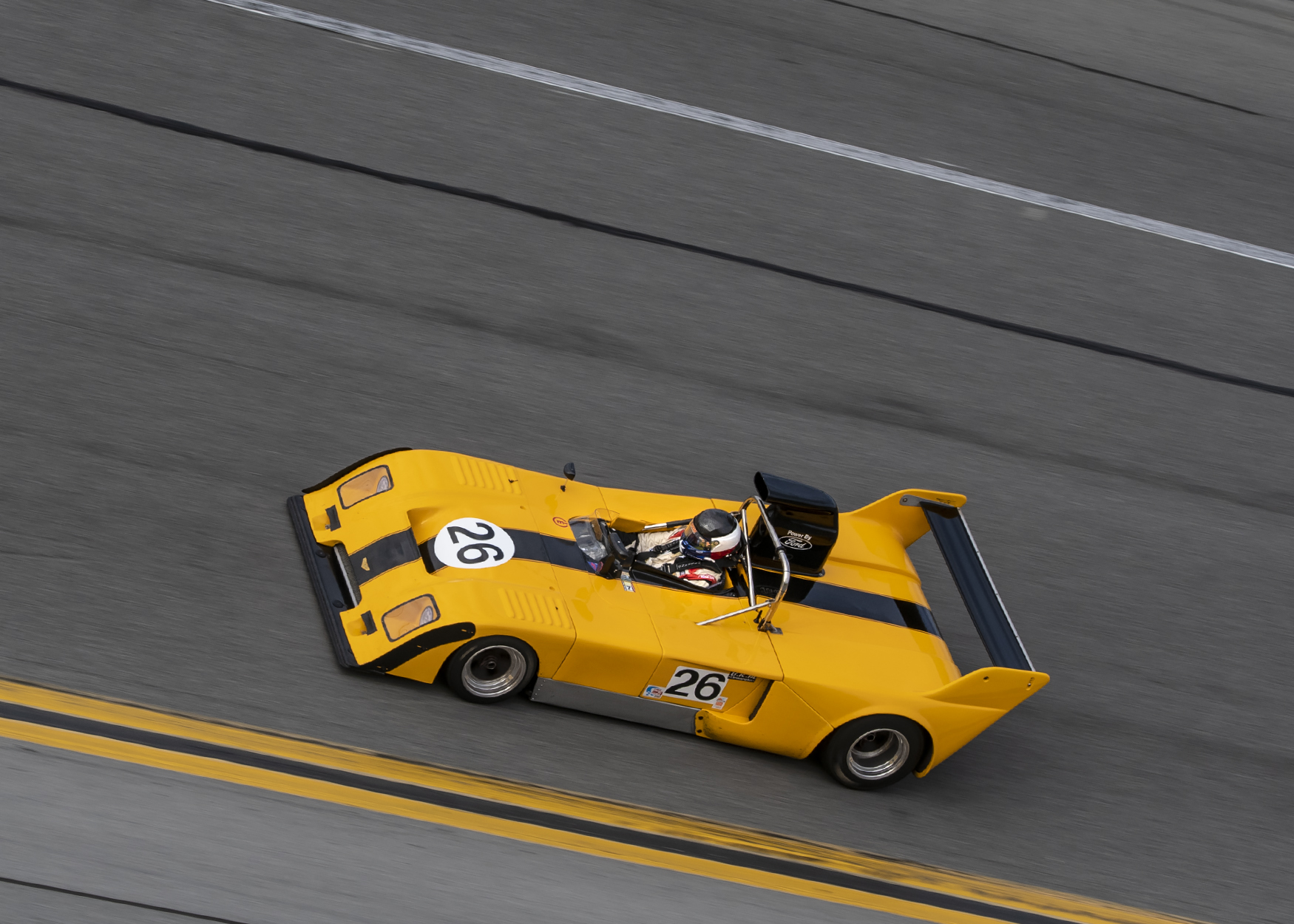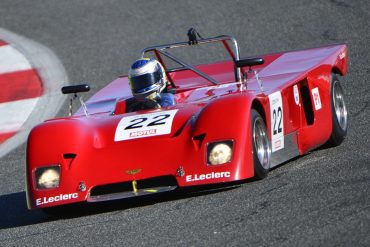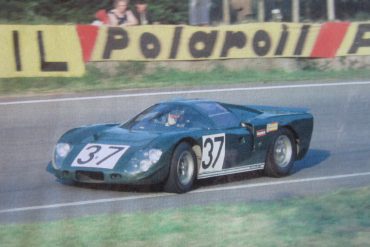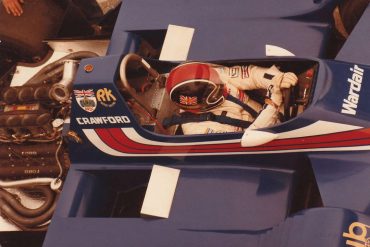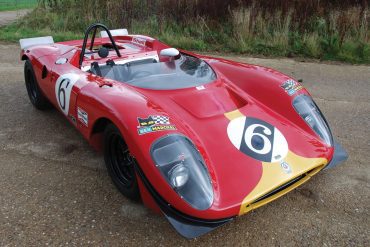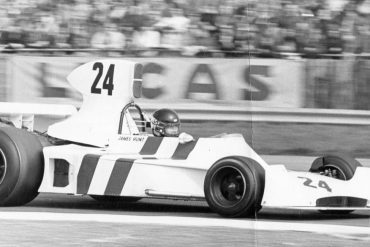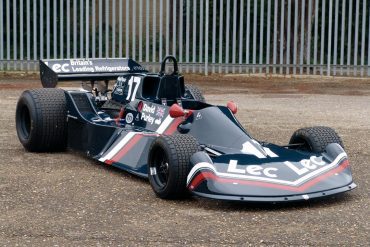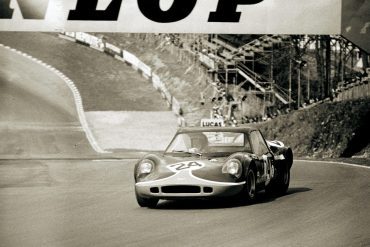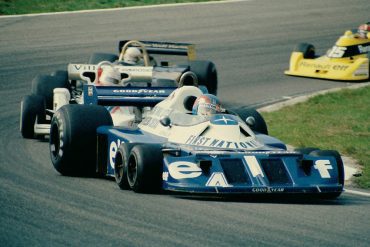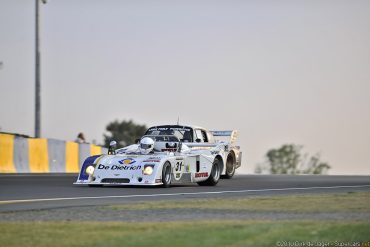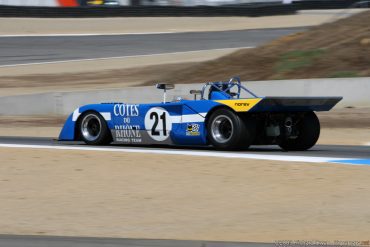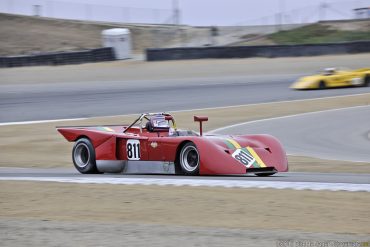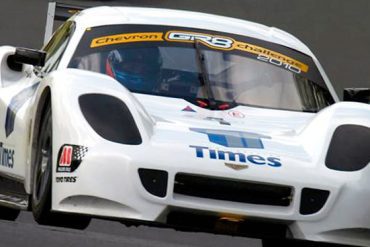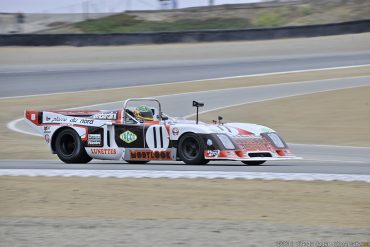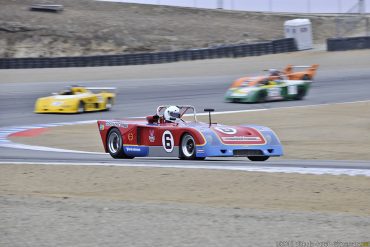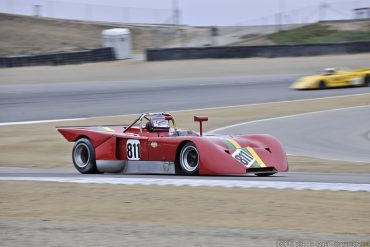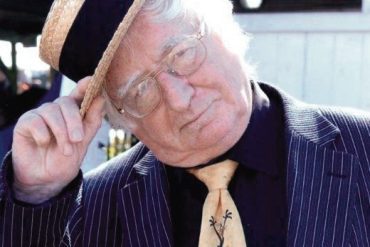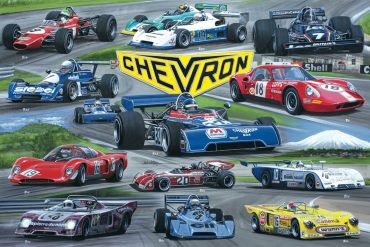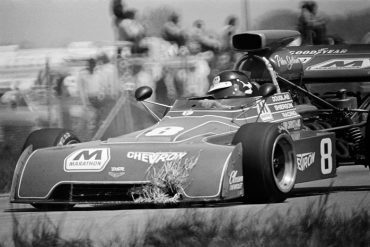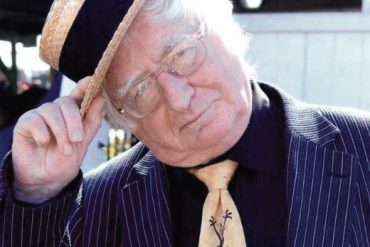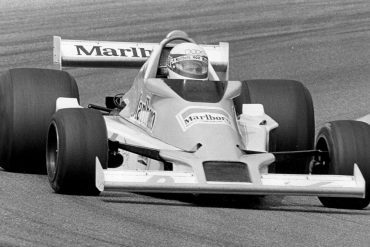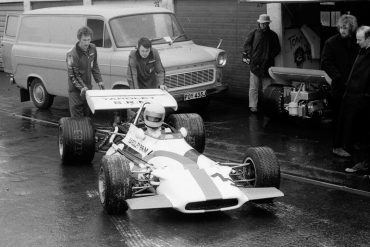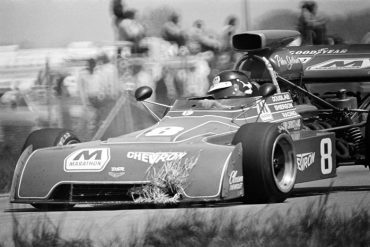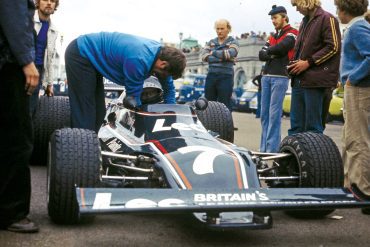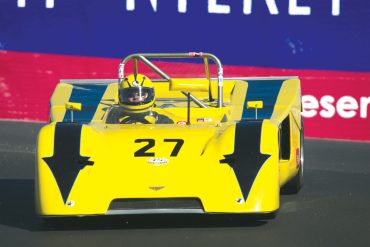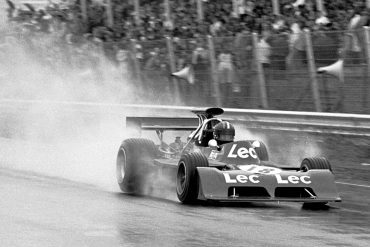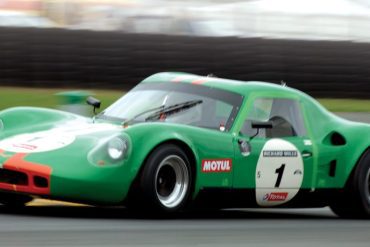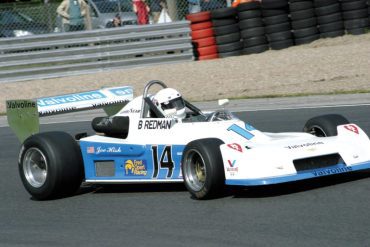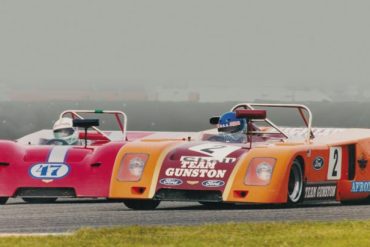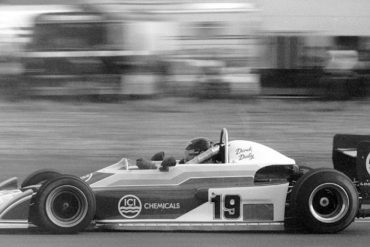
Chevron Cars
Research, History, Reviews, Media & More
Introduction / Featured Stories / Model Guides / News & Updates / The Full History
Chevron Cars: British Racing Excellence
Chevron Cars is a name that resonates with racing enthusiasts around the world, known for its innovative designs, lightweight engineering, and success across various motorsport disciplines. Founded by the talented engineer and racing driver Derek Bennett, Chevron quickly established itself as a force to be reckoned with on the racetrack. From its humble beginnings in a small garage to its iconic status in motorsport history, Chevron's story is one of passion, innovation, and racing excellence. This post explores the founding of Chevron, its rich history, the iconic car models it produced, and the milestones that have defined its journey.
The Founding Vision: Derek Bennett and the Birth of Chevron
Chevron Cars was founded in 1965 by Derek Bennett, a British engineer and self-taught racing driver. Bennett’s hands-on approach to car design and his deep understanding of the mechanics of racing set Chevron apart from the beginning. Working out of a small garage in Bolton, England, Bennett built his first car, the Chevron B1, which quickly proved successful in club racing. The B1’s performance on the track demonstrated Bennett’s engineering prowess and laid the foundation for Chevron’s future success.
Bennett’s philosophy was simple: create lightweight, aerodynamic race cars that could outperform more powerful competitors through superior handling and design. This approach would become the hallmark of Chevron Cars and guide the development of its future models.
The Evolution of Chevron: A Journey Through Motorsport
Chevron’s rise in the racing world is marked by a series of innovative car models that have become legends in their own right. Each model built on the successes and lessons of its predecessors, showcasing Bennett’s relentless pursuit of perfection.
Chevron B8: The Giant-Killer (1968):
One of Chevron’s most iconic models, the Chevron B8, was introduced in 1968. The B8 was a small, lightweight sports car powered by a 2.0-liter engine, but it quickly earned a reputation as a "giant-killer" in endurance racing. Despite its relatively small engine, the B8’s excellent handling and aerodynamics allowed it to compete successfully against much larger and more powerful cars. The B8’s success on the track helped establish Chevron as a major player in the world of motorsport.
Chevron B16: A Sports Car Icon (1969):
The Chevron B16, introduced in 1969, is perhaps the most famous car ever produced by Chevron. Known for its sleek, aerodynamic design and powerful performance, the B16 quickly became a dominant force in sports car racing. The B16’s design, which featured a low, wide body and a mid-engine layout, was ahead of its time and influenced future sports car designs. The B16 achieved numerous victories in races around the world and remains a favorite among historic racing enthusiasts today.
Formula Success: Chevron in Formula 2 and 3 (1970s):
Chevron’s success wasn’t limited to sports car racing; the brand also made a significant impact in open-wheel racing. Chevron cars, such as the Chevron B29 and B40, became highly competitive in Formula 2 and Formula 3 racing. These cars were known for their balance, agility, and speed, helping launch the careers of several prominent racing drivers. Chevron’s ability to compete in multiple racing disciplines highlighted the versatility and engineering excellence of its designs.
Chevron B24 and B28: Dominance in Formula 5000 (1970s):
In the 1970s, Chevron cars were highly successful in Formula 5000, a racing category that featured large, powerful engines. The Chevron B24 and B28 were among the most competitive cars in this series, securing numerous wins and championships. The success of these models further cemented Chevron’s reputation as a builder of high-performance race cars capable of competing at the highest levels.
Endurance Racing Glory: Chevron at Le Mans:
Chevron cars made a strong showing at the prestigious 24 Hours of Le Mans, one of the most challenging endurance races in the world. The Chevron B16, in particular, demonstrated the brand’s capabilities on the global stage, competing against the best in the world and earning respect for its speed, reliability, and innovative design.
Special Milestones and Achievements
Chevron’s history is marked by several significant milestones and achievements that have had a lasting impact on the world of motorsport:
Innovative Engineering Solutions: Derek Bennett’s use of spaceframe chassis designs and his focus on lightweight construction provided Chevron cars with exceptional handling and performance. These engineering innovations set Chevron apart from its competitors and contributed to its success on the track.
Endurance Racing Success: The Chevron B8 and B16’s victories in endurance racing, particularly at events like the Nürburgring and Le Mans, showcased the brand’s ability to build cars that could withstand the rigors of long-distance racing while remaining competitive.
Versatility Across Disciplines: Chevron’s ability to produce competitive cars in a variety of racing disciplines, including Formula 2, Formula 3, Formula 5000, and sports car racing, demonstrated the brand’s engineering prowess and adaptability.
Derek Bennett’s Legacy: Derek Bennett’s tragic death in a hang-gliding accident in 1978 marked the end of an era for Chevron, but his legacy lives on. Bennett’s hands-on approach to car design and his commitment to innovation continue to inspire engineers and racing enthusiasts.
The Enduring Legacy of Chevron
Chevron’s legacy is one of innovation, precision engineering, and racing excellence. The cars produced by Chevron during its peak years remain highly sought after by collectors and racing enthusiasts, and they continue to compete in historic racing events around the world. Chevron Cars Ltd., the company that carries on the Chevron name today, continues to build new cars and provide support for historic Chevron race cars, ensuring that the brand’s legacy remains alive and well.
The impact of Derek Bennett and Chevron Cars on motorsport cannot be overstated. Chevron’s focus on lightweight design, aerodynamics, and engineering excellence has influenced a generation of race car designers and continues to be felt in the racing world today.
Chevron Cars
Founded: 1965
Founder: Derek Bennett
Did You Know
Chevron Cars was founded in 1965 by Derek Bennett, a British engineer and racing driver. Bennett was a self-taught engineer with a passion for motorsport, and his hands-on approach to car design and manufacturing quickly earned Chevron a reputation for building high-performance race cars.
The first Chevron car, the Chevron B1, was built by Derek Bennett in a small garage in Bolton, England. Despite the humble beginnings, the B1 was a successful entry into the world of club racing, showcasing Bennett’s engineering skills and setting the stage for future success.
The Chevron B16, introduced in 1969, is one of the most iconic sports cars ever built by Chevron. Known for its sleek, aerodynamic design and powerful performance, the B16 was a dominant force in sports car racing during the late 1960s and early 1970s. Its success helped establish Chevron as a major player in the world of motorsport.
The Chevron B8, introduced in 1968, became known as a "giant-killer" in endurance racing. Despite being powered by relatively small engines, the B8 often outperformed much larger and more powerful cars, thanks to its excellent handling and lightweight design. The B8 remains a favorite among historic racing enthusiasts.
More Chevron
The Meteoric Rise and Tragic Fall of Derek Bennett and his Chevron Cars.
Enzo Ferrari was right when he made one of his jibes about the British motor racing opposition when he referred to them as “garagistes.” What he omitted to add to the statement was that they also happened to be exceedingly good at it. While Italy was home to the “-ini” factor – a network of minor constructors mostly turning out small capacity racing cars – and France had its share of low volume constructors such as DB, Gordini (and later the likes of Grac). None of them delivered quality results consistently, on a world-wide basis or at a price that was, within reason, affordable.
Admittedly, the UK had an advantage in that it enjoyed a highly active racing scene and community which had restarted fairly soon after World War II. This included a burgeoning grassroots club scene active at an increasing number of venues all over the country. This generated a constant source of drivers and racing personnel moving upwards through the sport and taking their talents up the ladder with them. Also, the British manufacturers enjoyed a degree of brand loyalty, in that if a driver achieved success with a certain marque at one level, they tended to remain faithful to it.
So, with an increasing amount of racing going on there was an expanding marketplace for those who reckoned they had what it took to design and build successful racecars. Many tried, but the fallout rate was high. Those who made it, however, read like a litany of racing history: Brabham, Cooper, Lotus, Lola, March and Ralt spring instantly to mind, not to mention Crossle, Elden, Elva, Ginetta, Pilbeam, Palliser – the list is seemingly endless.
Right up there with the best must be included Chevron. Good at both sports cars and single-seaters, during the late ’60s and ’70s, hardly a month would go by without another top international result for the marque.
Chevron was the brainchild of Derek Bennett, who started in much the same way as Chapman and Broadley. He designed and built Austin 7 Specials for his mates and then moved on to midget speedway racers. In 1960, he built a front-engined Formula Junior car, which was called a Bennett and was soon sold to make ends meet. Derek was not only a very able designer/constructor but also an excellent race driver – attributes which would later help in the development of his new company.
After selling his Formula Junior, Bennett took a brief hiatus from building racing cars; but in 1964, he decided to become a constructor again. Thinking that maybe the competition was too well established in the lesser single-seater formula, he opted for the clubmans category, where he would be up against Lotus Sevens and Mallocks. Fifteen years earlier, this group had been the formative hunting ground for budding designers like Eric Broadley and Colin Chapman. So, with considerable historic precedence, Derek Bennett Engineering of Salford in Manchester built what was to become the Chevron B1. At the same time, local Cheshire historic car dealer, Brian Classic, persuaded Derek to build a second example and the two cars were so successful that Bennett and the Chevron B1 took 28 overall wins in 1965. Orders started to come in and a further seven production cars were built and designated the B2.
Because the Salford workshop had now become cramped with the increased demand for the B2, larger premises were found in a disused cotton mill not far away in Bolton and the Chevron marque was formally established. Actually, it wasn’t as easy as all that because Derek couldn’t think of a name for his new cars. It has now become part of motor racing folklore that Bennett was browsing through a copy of the UK Highway Code and saw the word Chevron in the road sign and markings section. That was it… the name stuck.
The success of the B1 & B2 created inquiries for related projects, one of which was for the possibility of turning a Lotus 23 into a GT car. After some consideration, Bennett opted not to take on the project but instead decided to design his own GT, which became known as the B3. Lancashire farmer Digby Martland saw a model of the car, and on the strength of it, promptly ordered one to be fitted with a Ford Twin Cam unit. The car looked good, handled well and was quick straight out of the box. The secret was in the chassis, as the car was virtually a single-seater with a full-size fiberglass body. The chassis tubes went up the windscreen pillars into the roof, and the structure was stiffened with monocoque steel sills and double bulkheads. Peter Gethin tested the car at Oulton Park in 1966 and broke the GT lap record, while Martland went on to take some excellent results on the UK racing scene and effectively became the first Chevron works driver. Two B3s were built and at the same time a BMW 1991 cc engined car was constructed and designated the B4. Seen as a very brave move at the time, the idea of utilizing the hitherto unreliable BMW engine created the racecar that really got everyone talking about Chevron. In designing the new B4, Bennett was very thorough, and the perceived problems with the Munich-built engines were solved partially by dry-sumping and partially by a “hands on” visit to the factory in Germany. Eventually, success followed success in GT racing. The seven production versions sold in 1967 were known as B6s, and then a design update saw a total of 44 B8s built between 1968 and 1970. One popular feature of the entire B4/6/8 range of cars was the interchangeability of parts, which speeded up repairs after damage and helped ensure that nearly 70 cars were ultimately sold.
To try and get an added edge, some customers ordered cars with different engines, such as the B5 with a 2-liter BRM V8 with which Willie Green took many wins in 1969. One special project was the proposed one-off fitting of a Martin V8, which utilized many twin-cam parts. However, in the end, an FVA was fitted instead and the car was sold to John Bridges of Red Rose Motors in Chester. Bridges went on to play a leading role in the activities of Chevron between ’68 and ’70, in no small part by eventually becoming a director of the company.
Many B8s had their life extended by being converted into open Group 6 sports cars around 1970, in order to comply with new regulations. These cars were called Gropas (Graphics Racing Organization for Prototype Automobiles) and were designed by Bob Curl, who was responsible for the Nomads. Bennett approved of this scheme, although he was not so pleased with the B12 concept. The idea came from John Woolfe (who later lost his life at Le Mans in a Porsche 917) and consisted of a B8, whose wheelbase was lengthened to accommodate a Formula 1 Repco 3-liter V8. Over short distances it was quick, but at Watkins Glen and Le Mans in ’68, it suffered head gasket problems and was uncompetitive. Perhaps Bennett’s loss of interest in the B12 could be traced to the fact that he found success was the spur to continued interest in any given project.
Like all brilliant leaders, Bennett created a tremendous sense of spirit and camaraderie at the workshop – although it is said that he was not averse to exiting out of the back door to avoid talking to customers! Neil Bailey, who was with the company virtually throughout its entire life and now works in European Touring Cars, told me that it was a pleasure to go to work there, “There was a real buzz about the place.”
Despite suggestions in the racing press that he was only a sports car man, towards the end of 1967, Bennett designed a single-seater to F3 specification. Designated the B7, it was superseded by a revised production version for ’68 called the B9, which claimed Chevron’s first international single-seater win at Schliezer Dreieck in East Germany, with Alan Rollison driving. Despite being a competent car, consistent race-winning form only came with 1969’s B15 update, which took many top results in a formula previously dominated by Brabham and Tecno. The works cars were run by Red Rose Motors, with Tim Schenken, Reine Wisell and Alan Rollinson all taking wins. It is claimed that the subsequent B17 family for F2/3 suffered due to Bennett’s preoccupation with his sports car projects, but, as has been suggested by those who knew him, “He was only interested in success.”
As for the sports cars, by late ’69, the regulations no longer required a tall windscreen, so the B8 era was essentially finished. In response, Derek designed the startlingly beautiful B16 – looking very similar to a miniature Ferrari P4 – and created a car improved in virtually every way compared to the B8. It was an immediate winner. Almost as a new car, it was taken to the fearsome Nurburgring for its debut at September’s annual 500 Kilometer race for up to 1600 cc sports cars. Up against strong and established opposition from Abarth, Brian Redman ignored an agreement with Bennett to play a cautious waiting game. He took the lead on the first lap and stayed there until the finish. Orders flooded in and probably, despite its competence, some of those were because of the car’s sheer stunning looks. Usually fitted with a 1.8-liter Cosworth FVC, complete with a Hewland FT200, the B16 sold for £5500, which was extremely reasonable in comparison to a similar Porsche of the time.
In 1970, a new 2-liter European Sportscar Championship was established and between the strength of Redman’s driving and the effectiveness of the B16, Chevron won the series over strong Lola opposition. As ever, Bennett was ready early with the next evolution, the open B16 Spyder and, again at the Nurburgring 500 Kilometer race in ’70, Redman put the new car on pole and led for much of the race until a loose fuel fitting started an engine fire, which nearly destroyed the car. The production version, the B19, proved once again to be spectacularly successful, both in terms of results as well as good for Chevron’s book of business. The combination of Bennett’s design abilities and his and team manager Paul Owens’ development capabilities meant that the cars were winners almost as soon as they appeared on the scene. However, Chevron still struggled with the problem of Bennett’s lack of interest in projects, which didn’t show instant ability.
While the sports cars were almost left to evolve on their own through the B21/23/31/36 series – all of which achieved good results – the 1970s single-seaters experienced a veritable roller-coaster ride. The B18 family of cars suffered from a lack of development and in Formula 2, Siffert took their only memorable win in Bogota. The subsequent B20 was another design intended as a multi-formula exercise. Gethin took the Pau F2 race, but Chris Skeaping fared less well in the F3 race. The phrase, “undermined by the lack of a cohesive development program” applies to virtually every other single-seater model introduced. While the smaller capacity cars were suffering, Chevron’s entry into the small-block V8-powered Formula 5000 series, the B24, backed in particular by Count Van der Straaten’s VDS team and driven by Gethin, Redman and Teddy Pillette took many victories with Pillette capturing the Rothman’s European F5000 Championship in 1973. However, of the many B24 victories, one will forever be part of UK racing history – that being when Peter Gethin beat a large Formula One contingent for the outright win in the 1973 Race of Champions at Brands Hatch.
For 1976 the F2/Atlantic/F3 B34, considered by Neil Bailey, long-term Chevron engineer, to be “one of the best,” enjoyed proper development with Bennett and Owens working together on the project. This concerted effort paid off and allowed Riccardo Patrese to take the European F3 Championship that year. This was the beginning of a long line of much nicer-looking Chevron cars, and the old saying “if it looks right…” applied to some extent during the late ‘70s. Derek had his eye on greater things, however and persistent rumors that there would be a Chevron Formula One car were proved right at the end of the decade, but not before a severe blow occurred, which had a fundamental effect on the company from which it would never recover. Before the B41 F1 car – Derek’s pet project – could be completed, Bennett died of injuries suffered during a hang-gliding accident. Due to the time it took the company to find its feet after Bennett’s death, the B41 was out of date before it even debuted, and subsequently raced with little success in the British National Formula One championship.
Bennett’s right-hand man, Paul Owens, took over the running of the business, but it was clear the company could not keep going on its own without Bennett. Tony Southgate was taken on in a consultative capacity, and new cars were drawn up for the ’80s with the added problem of having to cope with the arrival of ground-effect technology and the resultant wing-cars that sprang from it.
During the 12 months after Bennett’s death, the majority of interest in the company had come from the USA. Peter Gregg became more involved before he tragically took his own life, and even Paul Newman was particularly keen on the Lancashire-built cars. It is believed that Newman’s interest led to the design and construction of the B51 Can-Am car, but development difficulties plus the financial strain of trying to deal with the lack of orders for their production cars, led to the business going into liquidation in January 1980.
At first a consortium, based at a long-time Chevron sports car racer’s premises in Scotland, took over, and a B52 sports car was launched. However, in more recent times Roger Andreason has taken over and moved everything to Dorset. He now trades as Chevron Cars Ltd. at Piddletrenthide, DT2 7RF. Tel 01300 348499 with the Chassis Register at the same address.
The inspiration and driving force behind Chevron was obviously Derek Bennett. His brilliance made the cars potential winners anywhere they went; but perhaps every genius has flaws. Despite this, the little constructor from the cotton mill in Bolton can proudly take its place under the same spotlights as Lotus and Lola. They all contributed in their time to changing the face of motor racing.
Not bad for a garagiste.
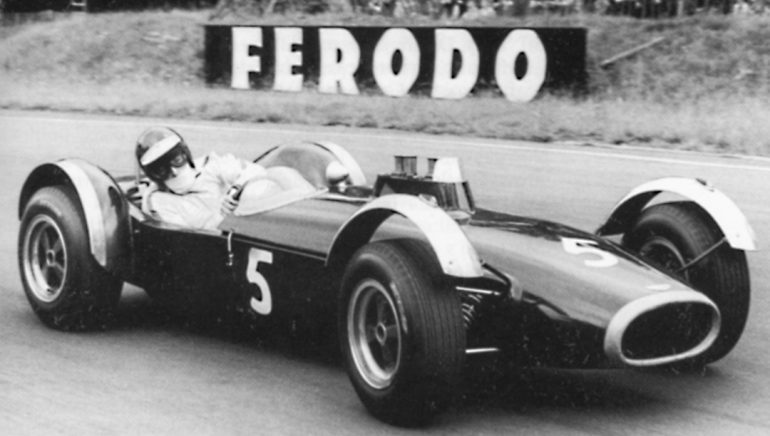 The car that put Chevron on the map, the Clubmans B2. Howard Heerey drove his B2 to the 1967 Clubmans Championship, launching Chevron permanently onto the British racing map.
Photo: Frank Hall
The car that put Chevron on the map, the Clubmans B2. Howard Heerey drove his B2 to the 1967 Clubmans Championship, launching Chevron permanently onto the British racing map.
Photo: Frank Hall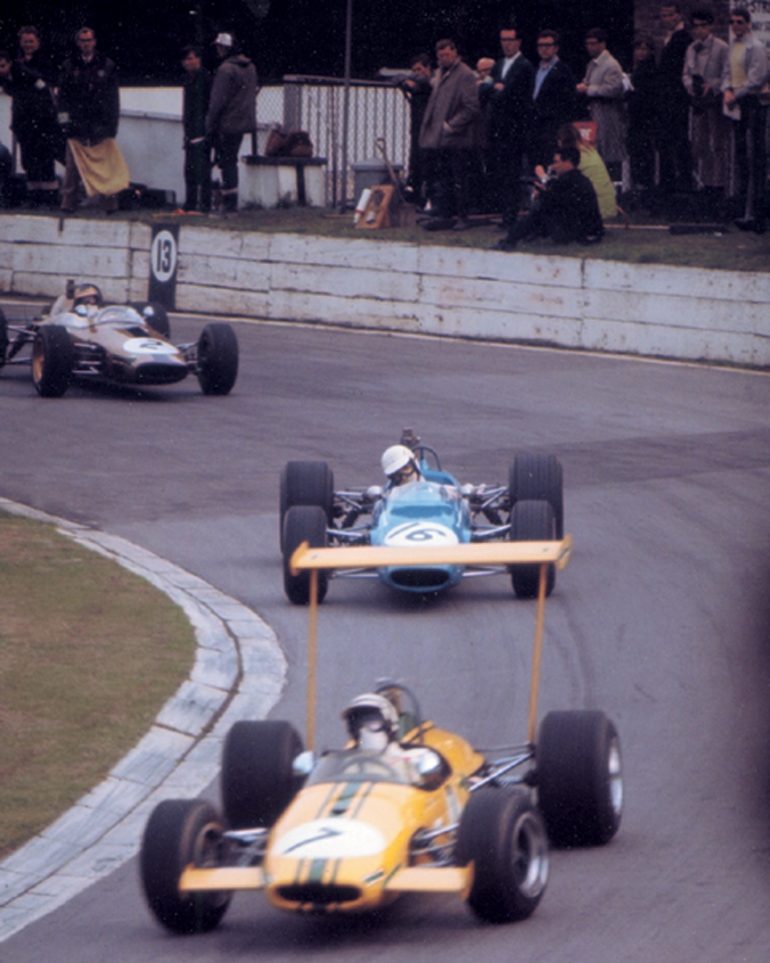 Tim Schenken, in the Chevron B9, chases the winged Brabham BT21B of Peter Westbury during an F3 race at Crystal Palace in 1968.
Photo: Peter Collins
Tim Schenken, in the Chevron B9, chases the winged Brabham BT21B of Peter Westbury during an F3 race at Crystal Palace in 1968.
Photo: Peter Collins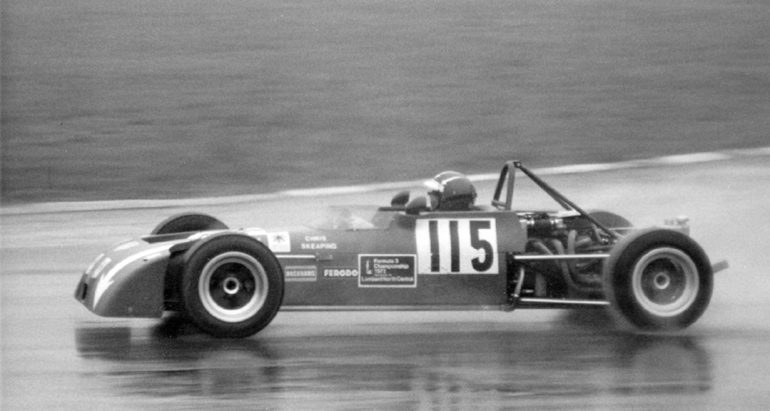 Schenken never finished out of the top three all season, clinching the 1968 Lombank F3 Championship with six wins.
Photo: Peter Collins
Schenken never finished out of the top three all season, clinching the 1968 Lombank F3 Championship with six wins.
Photo: Peter Collins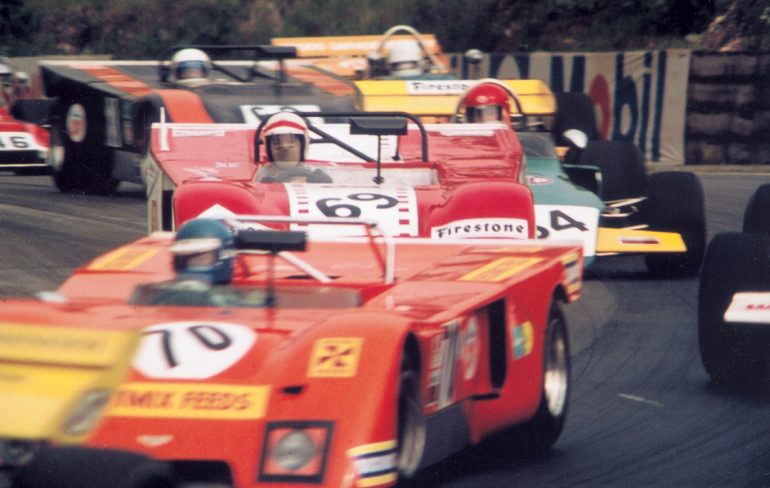 A gaggle of Chevron B19s pack into Druids Bend at Brands Hatch during the 1971 Rothmans 50,000.
Photo: Peter Collins
A gaggle of Chevron B19s pack into Druids Bend at Brands Hatch during the 1971 Rothmans 50,000.
Photo: Peter Collins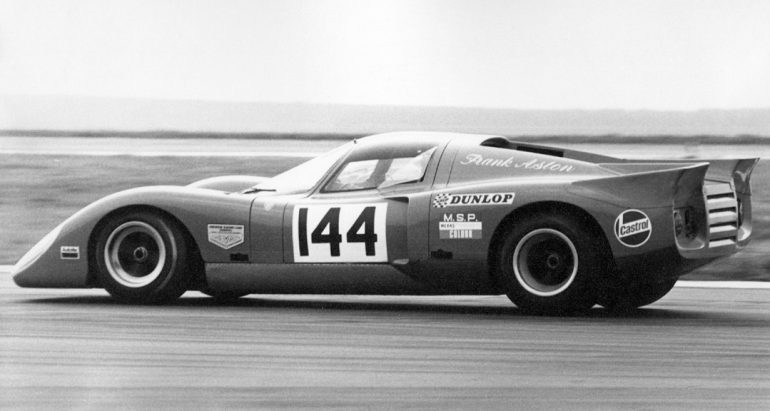 Successful club racer Frank Aston at the wheel of BennettÕs beautiful Chevron B16 at Silverstone in 1970.
Photo: Peter Collins
Successful club racer Frank Aston at the wheel of BennettÕs beautiful Chevron B16 at Silverstone in 1970.
Photo: Peter Collins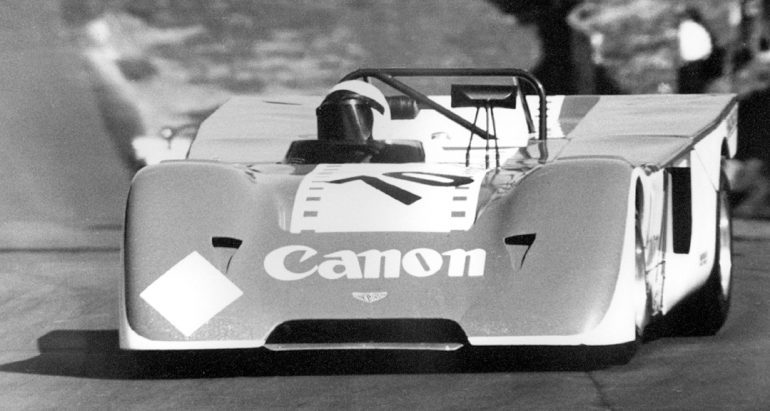 John Burton powers his Chevron B19 through Druids Bend at Brands Hatch in 1971.
Photo: Peter Collins
John Burton powers his Chevron B19 through Druids Bend at Brands Hatch in 1971.
Photo: Peter Collins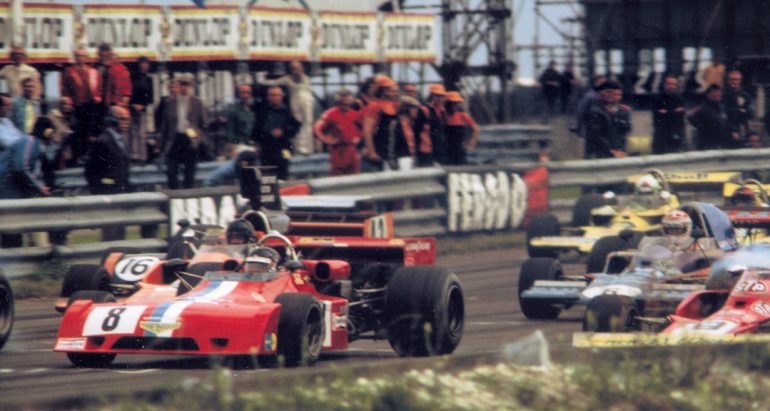 Peter Gethin in the Team VDS Chevron 24 takes the start of a Rothmans F5000 race at Thruxton in 1973. GethinÕs teammate Teddy Pillette would ultimately win the 1973 Rothmans F5000 Championship.
Photo: Peter Collins
Peter Gethin in the Team VDS Chevron 24 takes the start of a Rothmans F5000 race at Thruxton in 1973. GethinÕs teammate Teddy Pillette would ultimately win the 1973 Rothmans F5000 Championship.
Photo: Peter Collins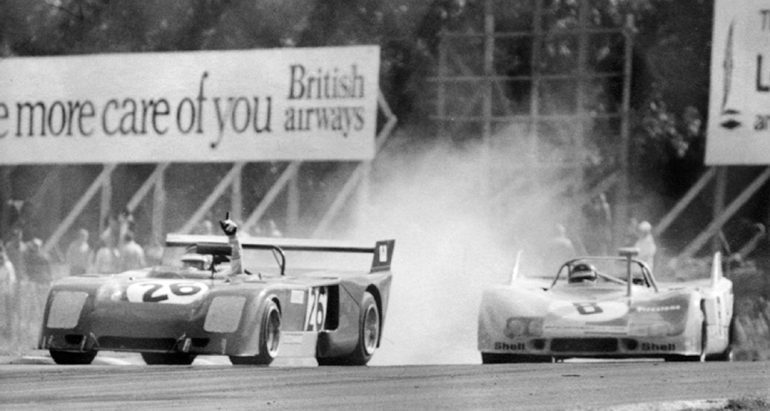 David vs. Goliath. The Chevron B23 of Peter Clarke led the Porsche 908/3 of Barth/Haldi at the 1974 Brands Hatch 1000 Kms until ClarkeÕs engine expired.
Photo: Peter Collins
David vs. Goliath. The Chevron B23 of Peter Clarke led the Porsche 908/3 of Barth/Haldi at the 1974 Brands Hatch 1000 Kms until ClarkeÕs engine expired.
Photo: Peter Collins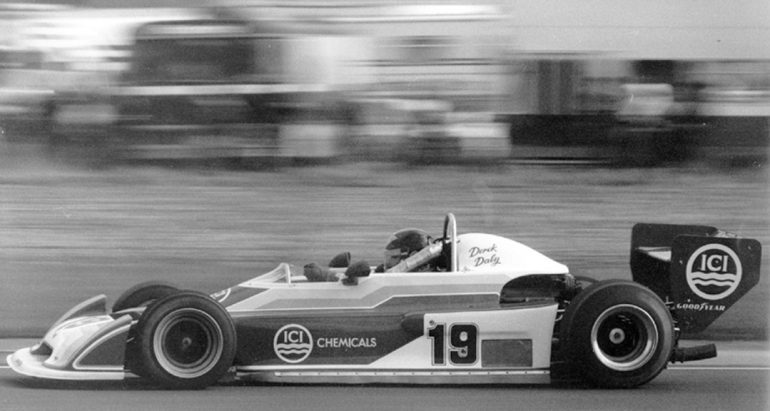 Derek Daly at the wheel of the ÒworksÓ B42 F2 car, at Thruxton in 1978. Daly scored two victories for Chevron in international F2 that year at Mugello and Vallelunga.
Photo: Peter Collins
Derek Daly at the wheel of the ÒworksÓ B42 F2 car, at Thruxton in 1978. Daly scored two victories for Chevron in international F2 that year at Mugello and Vallelunga.
Photo: Peter Collins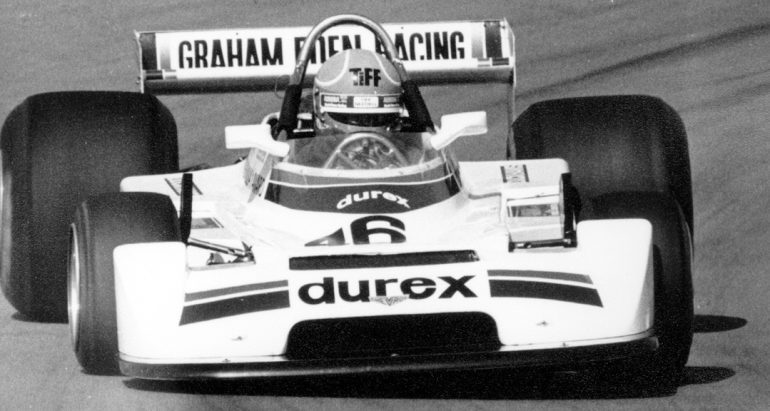 Tif Needel, at the wheel of the ill-fated B41 F1 car, during practice for the 1979 Race of Champions at Brands Hatch.
Photo: Peter Collins
Tif Needel, at the wheel of the ill-fated B41 F1 car, during practice for the 1979 Race of Champions at Brands Hatch.
Photo: Peter Collins

